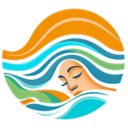Based on the study 10.1186/1748-7161-2-6 by Theodoros Grivas and Olga Savvidou.
Melatonin, often hailed as the ‘light of night,’ plays a pivotal role in orchestrating our sleep-wake cycles. But beyond its well-known function as a sleep regulator, this humble hormone might hold the key to unraveling a medical enigma: adolescent idiopathic scoliosis (AIS). AIS, a condition characterized by an unexplained curvature of the spine in teenagers, has long puzzled medical experts.
Produced in the pineal gland, melatonin’s production peaks at night, signaling to our bodies that it’s time to rest. Its influence extends beyond sleep, impacting various biological functions, from mood regulation to immune response. But how does this night-time hormone connect to spinal health in adolescents?
Adolescent Idiopathic Scoliosis (AIS): A Mystery Unraveled?
Affecting 2-3% of adolescents, Adolescent Idiopathic Scoliosis (AIS) presents a significant challenge due to its unknown causes. Traditional views have focused on genetic and environmental factors, yet a comprehensive understanding has remained elusive.
Linking Melatonin and AIS
In the groundbreaking study “Melatonin the ‘light of night’ in human biology and adolescent idiopathic scoliosis,” researchers explored this intriguing connection. They discovered that melatonin might play a more critical role in spinal health than previously thought. The study suggests a potential deficiency in melatonin could be a contributing factor to the development of AIS.
Implications for Treatment and Prevention
This revelation opens new avenues for treating and preventing AIS. By focusing on melatonin levels and its regulation, we could see the development of innovative therapeutic strategies that target the root causes of this spinal condition.
The study not only sheds light on the mysterious link between melatonin and AIS but also underscores the hormone’s multifaceted role in human health. As we continue to explore this connection, we edge closer to solving the puzzle of AIS, offering hope to many adolescents facing this challenging condition.
Please Also Check:
- “Melatonin: Physiological Effects in Humans” – This article discusses the circadian rhythms and physiology of melatonin in humans, highlighting its role in various bodily functions and pathophysiology. https://pubmed.ncbi.nlm.nih.gov/25908646/
- “Melatonin and Health: Insights of Melatonin Action, Biological Functions, and Associated Disorders” – This publication provides a comprehensive overview of melatonin’s actions, its beneficial effects in various conditions, and its therapeutic potential. https://pubmed.ncbi.nlm.nih.gov/36752886/
- Further Citations and Similar Articles: These articles also offer a variety of perspectives and detailed information on melatonin:
- “The Basic Physiology and Pathophysiology of Melatonin”.
- “Melatonin: From the Hormone to the Drug?”.
- “Melatonin in Humans: A Biochemical Marker of the Circadian Clock and an Endogenous Synchronizer”.
- “The Physiology and Pharmacology of Melatonin in Humans”.
- “Melatonin: Physiological and Pharmacological Aspects Related to Sleep”.
- Sleep Protocol: How to Immediately Fall Asleep: https://sleepinfo.ru/2024/01/26/how-to-immediately-get-to-sleep-the-ultimate-protocol/
